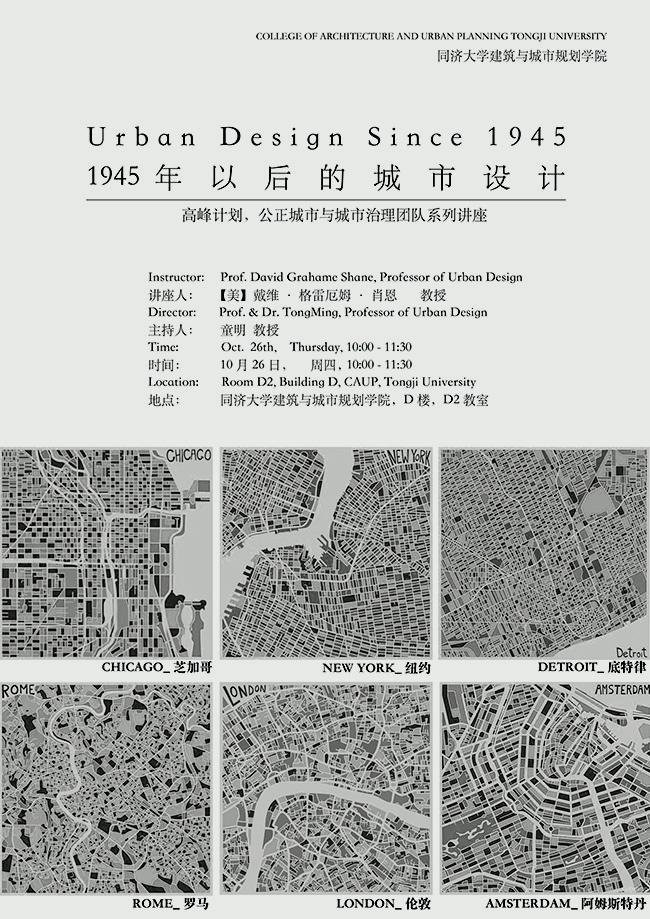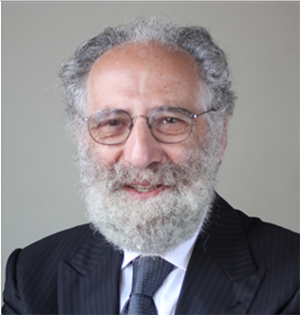新闻中心




Instructor

Prof. David Grahame Shane
Prof. David Grahame Shane moving to Columbia University Graduate School of Architecture, Planning and Preservation (GSAPP) in 1985. In 1990 he started teaching Urban Design, becoming Co- Director 1990-97 and then as Adjunct Full Professor teaching the Recombinant Urbanism Seminar. During the 1990's and 2000's he also taught in the University of Pennsylvania and City College, New York, Urban Design programs, while lecturing on City Planning at Cooper Union (1992-2012). Since 1999 he has participated in the UD PHD program at the IUAV Venice with Professors Secchi and Vigano and is a Visiting professor at the Milan Polytechnic.
Prof. David Grahame Shane has lectured widely and published in architectural journals in Europe, the USA and Asia. He is the author of Recombinant Urbanism: Conceptual Modeling in Architecture, Urban Design and City Theory (2005). He published Urban Design Since 1945: a Global Perspective (2011). In 2016 his Recombinant Urbanism, translated by Zhang Yunfeng, was published in Chinese by the China, Building, Architecture and Urban Planning Press, Beijing.
主讲人
戴维·格雷厄姆·肖恩教授
1985年至今,任职于哥伦比亚大学建筑规划与保护学院城市设计专业,教授。1990年,他开始教城市设计,担任主管(1990-1997),随后担任客座教授,负责重组城市工作组的教学工作。在哥伦比亚大学任职期间,同时作为宾夕法尼亚大学、库伯联盟以及城市学院的外聘教授。主要研究领域为:城市设计、城市文化、都市重构等研究领域。
戴维·格雷厄姆·肖恩教授曾多次于曼谷、新加坡、香港、南京、上海、北京举办讲座,并与同济大学存有长期良好的合作关系。近5年内,出版专著《重组城市:关于建筑学、城市设计和城市理论的概念模型》(中文版2016年)与《1945年以来的城市设计:全球视角的观瞻》(中文版正在准备出版)。
Topic
Based on the global perspective, we can sum up the four urban development models (the metropolitan model, the megalopolis model, the fragmented metropolis and the megacity) from the 70 years after the World War II. Each mode has been dominated for up to ten years in this period. What does these city models mean?
Although this time series is logically seemingly reasonable, the global cities since 1945 are not fully developed in accordance with such a linear evolutionary process. In fact, the metropolitan model, the megalopolis model, the fragmented metropolis and the megacity, these urban concepts are expressed by some of the separation and interrelated urban development model. It can even be said that in the same area of many cities, they coexist with different plaques and form complex systems of interrelated fragments that are symbiotic with each other.
讲座主题
基于全球视角,我们可以从二战以来的 70 多年历程中,概括出四种城市发展模式(大都市、大都会、碎化大都市和巨构城市), 每一种模式相继占据主导长达十数年左右的时期。这些模式是什么,其内涵为何?
虽然这一时间序列在逻辑上貌似合理,但是自 1945 年以来的全球城市并非完全按照 这样一种线性演进过程来进行发展。事实上,大都市、大都会、碎化大都市和巨构城市这 些城市概念,所表达的是一些既相互分离、又相互关联的城市发展模式。甚至可以说,在 许多城市的同一区域中,它们以不同性质的斑块而同时并存,形成了彼此具有共生关系 的、相互关联的片段所构成的复杂系统。